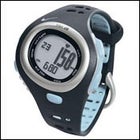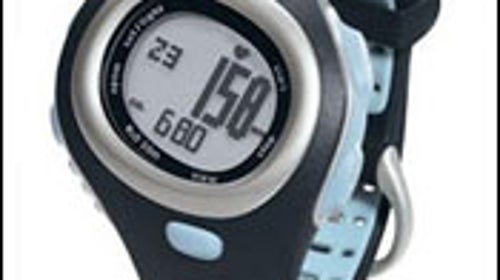It wasnt that long ago that buying a heart-rate monitor was a big deal, with a big price tag to match. Now theyre like buying a digital watch.
Nike Triax C6
 Triax C6
Triax C6Depending, of course, on how many bells and whistles you want. For instance, I mostly use one during the winter when forced to spend an hour or two each week on a trainer in the garage, a practice I utterly and completely loathe. To help keep me focused, I use a monitor and make sure I spend at least a little time at 80 percent of max heart rate. For that, I recently acquired a Polar FS1 ($50; www.polarusa.com), a very basic but perfectly functional unit. It displays heart rate, of course, but also lets you set target= zones, has an audible warning when youre out of those zones, and records average or maximum heart rate during a workout. It has watch functions, as well.
But as usual, pay more, get more. Nike makes a nifty monitor called the Triax C6 ($109; www.nike.com), which includes a personal zone finder so you can customize your workouts, four programmable training zones, calorie counter, an exercise chronograph and HR graph, one-button access, average HR, time in zone, user-replaceable batteries, and traditional watch functions like time, date, back light, and alarm. Its also waterproof to 50 meters, which is pretty good.
Polars CS300 ($209; www.polarusa.com) ups the ante a bit more and combines cycle-computer features. It gives you speed and other cycle info, calorie consumption, all sorts of heart rate zones and alarms, and the ability to upload data to Polars personal trainer site.
My feeling is that the Nike unit has a great balance of price and features. The lesser Polar may be too bare-bones for some people. The higher-end one is great, if you can use the features.
Youve got your winter gear, now get outside and use it. makes it easy to find nearby slopes just begging for fresh tracks.


